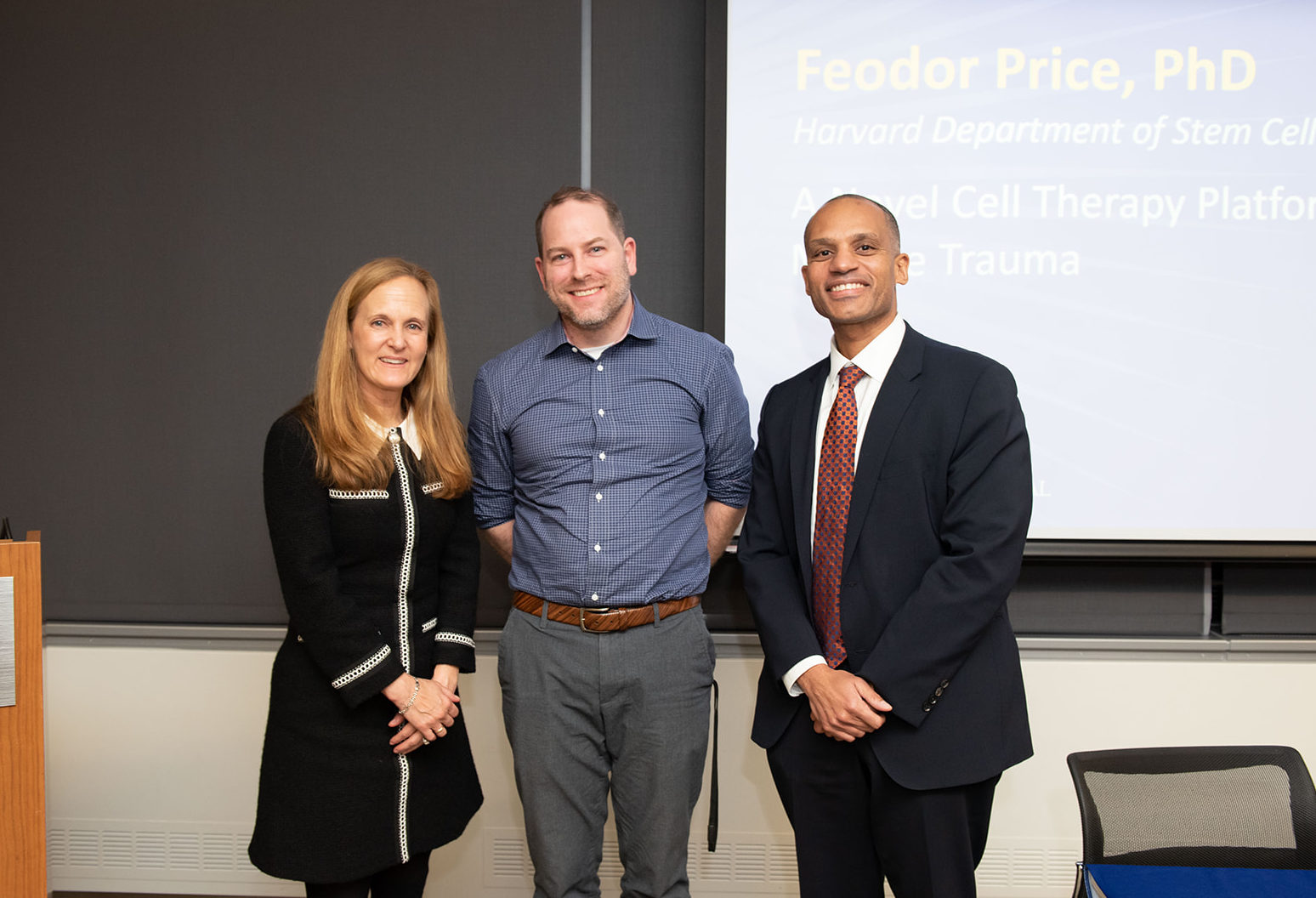
Audrey Epstein Reny, Feodor D. Price, Ali Salim
Research Associate, Rubin Lab, Department of Stem Cell and Regenerative Biology, Harvard University
Reza Seyedsadjadi, MD
Massachusetts General Hospital
A Novel Cell Therapy Platform for Treating Skeletal Muscle Trauma
Skeletal muscle has a remarkable capacity to regenerate. This capacity is due to a satellite stem cell that resides within skeletal muscle tissue and is responsible for post-natal muscle growth and regeneration. Although skeletal muscle regenerates well, instances arise where the damage is so severe that the regenerative process is less efficient. One such instance is when a large portion of skeletal muscle is lost suddenly. This scenario occurs during car accidents where the victim’s muscle is crushed or impaled, on the battlefield where military personnel are injured from a bomb or a gunshot wound, or in elderly patients where compound fracture may result in a bone piercing the muscle. In each instance, volumetric muscle loss (VML) occurs, causing permanent loss of movement and muscle function. To date, there are no effective surgical or therapeutic treatments.
Delivering satellite cells into damaged muscle would be a novel regenerative therapy to treat VML. However, as is the case with many adult stem cells, satellite cells cannot be expanded in culture. In the Rubin lab, we have discovered a method to generate millions of cells that behave like satellite cells when transplanted in vivo. We call these cells in vitro derived satellite cells (idSCs). Recently, we have successfully generated idSCs from human muscle biopsies. With funding from the Stepping Strong Innovator Award, the team seeks to rigorously demonstrate the in vivo capacity of human idSCs when transplanted into standard model of muscle regeneration and in conditions of acute trauma.
Feodor Price, PhD, is a research associate at Harvard University in Lee Rubin’s lab. Working in the department of Stem Cell and Regenerative Biology (HSCRB), Feodor combines stem cell biology and therapeutic screening to better understand the process of skeletal muscle regeneration. His recent work, which focuses on creating myogenic cells in vitro that mimic the functional potential of satellite cells, has re-ignited interest in the cell therapy space to treat skeletal muscle regeneration. By studying these new cells, the team seeks to translate these findings to the clinic for the treatment of trauma.
